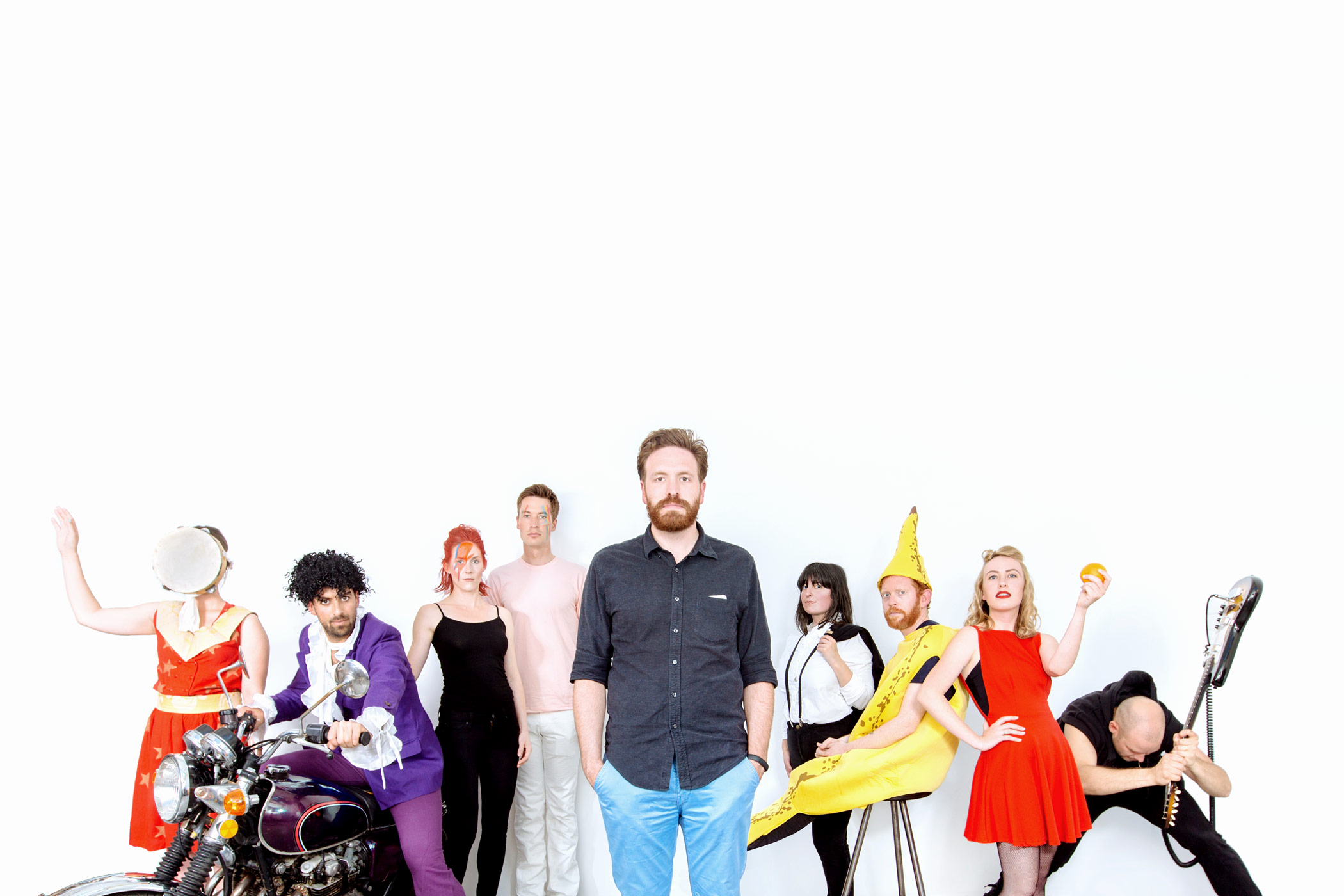
- Interview by Tina Essmaker May 27, 2014
- Photo by Helena Price
Ryan Sims
- designer
Born and raised in the Midwest, Ryan Sims developed a fascination for sports, music, and later, design, when he bought his first computer and a copy of Photoshop with his high school graduation money. Since then, he has been designing websites and products both large and small, primarily focusing on the juicy bit of the Venn diagram where music and design overlap. He’s had a role in designing every version of Rdio since its launch in 2010, eventually becoming its Head of Design in 2012. Larry Bird is still his hero.
Interview
Tina: Describe your path to becoming a designer.
Looking back on it, I remember a particularly salient moment when my freshman history teacher taught us how to take outline-style notes. At the time, it didn’t seem very meaningful since note-taking is the least glamorous part of school—but something clicked. It taught me to how to listen, to pay close attention, take the most important points of any and every lecture, organize them in my mind, and put them down on paper in a very structured way. I remember feeling an immediate affinity for formatting and composing information in that style.
In 2000, I graduated high school from Joplin, Missouri, and moved to Springfield with a friend. I was considering a transfer from my job at Office Depot when someone first told me about Monster.com, where I found one web designer position available at a pager company called Atlas Communications. I had been designing websites here and there for my band and some friends, but hadn’t really thought of it as a way to make ends meet. Even though I didn’t have much to put on a résumé, I did my best to make it look like I knew what I was doing. The next week, I was floored when I received a call from Brad Smith, who asked me to come in for an interview. The thought of designing websites all day felt like a pipe dream compared to selling printer cartridges and index cards at Office Depot.
Meeting Brad was pretty surreal: it almost felt as if someone was writing the screenplay of my life. I remember walking into Atlas and being acutely aware, almost instantaneously, that I had met my best friend in the entire world. You know Brad—he is so charismatic and charming. I went into that interview worried that he would think I was a fraud, but I left feeling pretty confident that I’d fooled him. A few days later, he offered me the job. Brad claims that he still has my original résumé, which would be quite interesting to look at—I’m sure it’s ridiculous.
Brad and I worked at Atlas for a few months until September 11th happened. The company got cold feet about its website design and hosting departments and sold that portion of the business to Brad for one dollar. Two and a half weeks later, we had an office, a business loan, and a new design agency called Neubix Studios.
You’re self-taught as a designer?
I am. When Brad hired me at 19, I was super green with no formal education in design and only a handful of projects to my name. I had bought my first computer—an HP Pavilion that Brad called “the toaster”—with my high school graduation money. Our family didn’t even have Internet until I got my computer. I sent my first email, downloaded my first MP3, and designed my first website that summer. Computers and design were completely foreign to me, and I hit the ground running, soaking up anything and everything I could.
I leaned heavily on publications that posted links to well-designed websites, like linkdup, K10K, Styleboost, and Surf Station. They were my guiding light, and I checked them obsessively. They were essentially the precursor to design blogs and since there were no RSS feeds then, I would visit them every day—or, more often than not, every night—and refresh them one at a time, hoping that there was new content to look at. I devoured new sites and savored every pixel, trying to learn the tenets of design by observation. I had good taste, but no foundation for my skills, so I spent years shamelessly copying those who came before me until I was good enough to do original work. I remember spending hours and hours and hours learning.
I wish I’d had a design mentor then. Brad was a little older than me, and we were kindred spirits: both of us lacked much real-world experience. I didn’t really know how to make websites, and Brad didn’t really know how to run a business. (laughing) We just did the best we could with what we had.
So, Brad bought the web design company, which you two spun off into Neubix. What happened between then and working for Rdio?
Those first couple years with Neubix were pretty trying. Brad was getting his feet wet from a business owner’s standpoint, and I was trying to find my style and learn how to be a professional designer.
We were having a blast doing what we loved and we experienced some pretty cool moments along the way. We had the good fortune of hiring some great young designers. The first was Nathan Borror, who went on to create Readernaut and work at Facebook. The second was Keegan Jones, who was 15 when we hired him, and who went on to work at Gowalla and Facebook. I ran into Keegan just last week on my way home only to find out that he had recently moved and we now live on the same block in San Francisco. Crazy. (laughing)
Around 2005, I did some freelance design work for a music site called PureVolume, which ended up being some of the best work I had done up to that point. Brad and I met the PureVolume guys at the following year’s South by Southwest (SXSW), and we hit it off. They courted us and started floating out ideas of buying Neubix and moving us out to Boston to lead PureVolume’s creative team. The idea of leaving the agency world and the Midwest for Boston proved too enticing, even though Neubix was our baby.
That was a difficult transition for us. Right around the time we had finally gotten our shit together in the agency model, we moved onto an entirely new one at PureVolume—one that more closely resembled what we call product design nowadays. I remember making a lot of silly mistakes. I found it difficult to adjust my working style to account for a more fluid, iterative process. I was incredibly protective of any work that wasn’t perfectly polished, a habit I had formed doing client work, where presentation and first impressions can make or break a project.
In 2008, PureVolume launched a sister product called Virb. Brad and I spent more and more time on Virb, and less on PureVolume. It was a promising social network that ultimately failed to gain the traction that more promising ones like Facebook got. We sold Virb to Media Temple and pivoted it into a website builder, our first foray into a monthly subscription model.
After working with Brad for the better part of a decade, I made the difficult decision to leave Virb. I had been helping my buddy, Wilson Miner, with some design comps for a project that would eventually become Rdio. I officially started at Rdio in March of 2011 and have been there ever since.
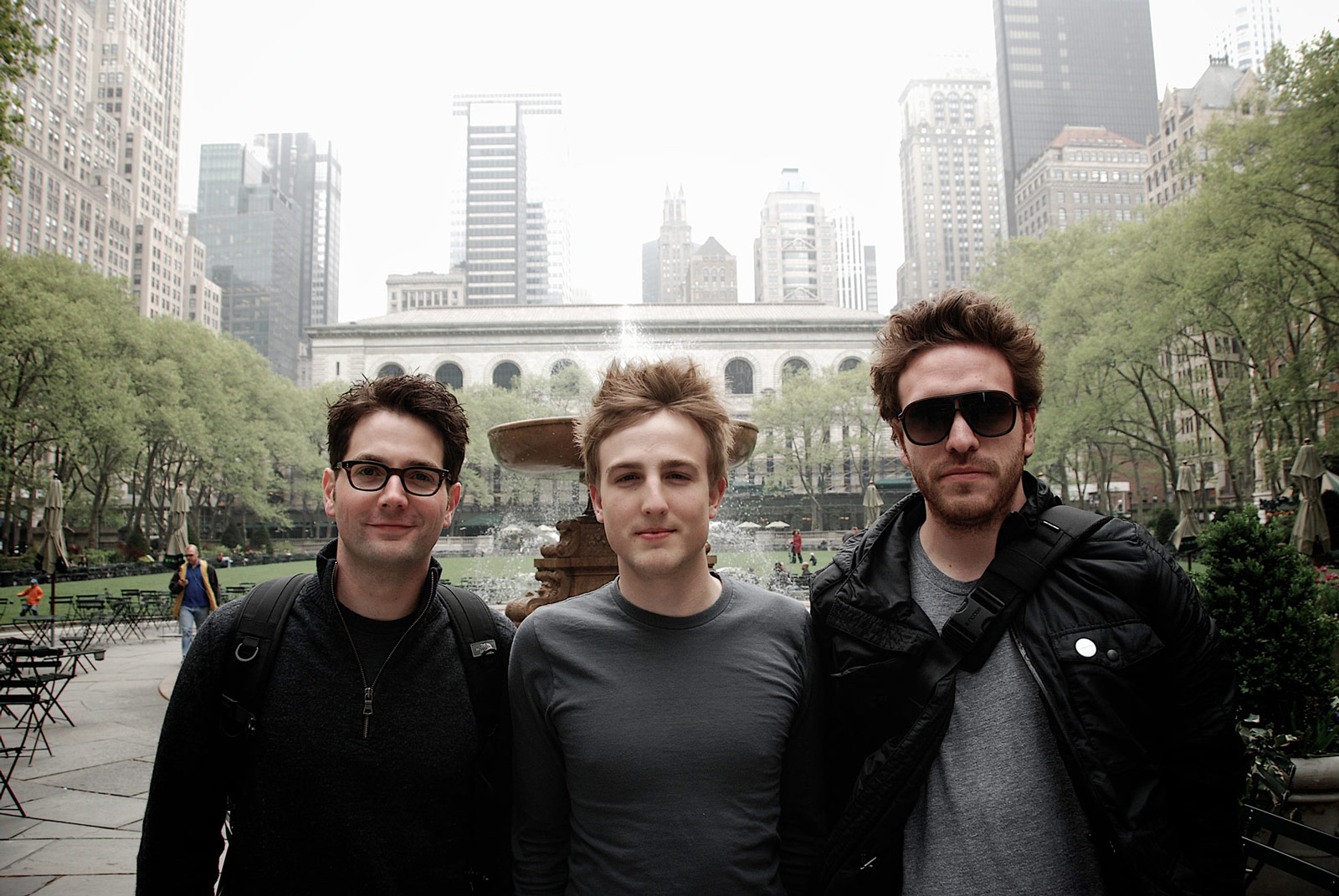
“Blind faith and optimism led me to go off on my own, and I was incredibly lucky to have stumbled into all of the opportunities that came my way.”
Was creativity part of your childhood?
I wasn’t what you would consider an artistic kid. I had hobbies like basketball and music, but I wasn’t off in a corner painting or drawing or writing stories or anything like that. All of my touch-points with design and creativity early on were typographic, like designing t-shirts for the high school. When I would take notes in school, they became more elaborate with emboldened headers for emphasis and custom, hand-drawn fonts. Designing words and information felt like a creative expression to me, but I didn’t feel overly artistic per se.
It’s unfortunate I didn’t go to college because I was a curious student and a fast learner. Finishing all of my classwork was not my forte, but I always tested well and graduated near the top of my class. Design and creativity were a very practical arrangement in that they always supplemented learning. I had an admiration for taking information and presenting it in the most beautiful and simple way, whether that was in the form of t-shirts, notes, or fonts.
Why did you decide not to go to college?
I didn’t do a very good job of preparing for college during high school and missed out on a lot of scholarships. Our family didn’t have a lot of money, and I was really put off by the prospect of massive student loan debt. Blind faith and optimism led me to go off on my own, and I was incredibly lucky to have stumbled into all of the opportunities that came my way.
I heard Merlin Mann say something that resonated with me. He said most people’s careers are like “moments that snap together like magnets.” A good portion of my career has been spent in the music, design, and interactive spaces, but I certainly didn’t plan it that way from the start—it just sort of snapped together like that. Even though I had no good reason to be confident that it would all work out, I just knew I would find something I enjoyed doing and things would snap together in the right sequence.
That’s a cool way to look at it. Was there an “Aha!” moment when you realized that you wanted to pursue design as a career?
I was in a band all through high school, and the first website I ever designed was our band’s site. We weren’t a very good band, but at 16 or 17 years old, that was my entire world. My bandmates and I talked about music all the time. We practiced almost every day after school. We played live shows as often as we could book them. Playing music live on a stage is a feeling that is hard to eclipse. We were so young and alive and passionate, and that passion spilled over into every design project I did for the band. It was intoxicating. When I started doing design professionally, it was hard to put that same passion into making sites for clients like American Pool & Spa or Skipper G Sailboats. (laughing) But I stuck with it and found my true calling: product design.
You mentioned earlier that you wish you had been able to have a mentor when you were learning web design.
I do, yes. My “mentors” were really just mentors by proxy: designers like Eric Jordan of 2Advanced and Arnaud Mercier of Blast Radius. They were my heroes and their work inspired and motivated me to get better. I wanted to crawl inside their minds and ask a million questions.
I feel like there was a void in my development because I didn’t have a design mentor or even a more experienced design peer for most of my career. I would have cherished the wisdom of either and learned better habits earlier. Neubix and our blog, The Big Noob, really embodied the independent spirit that Brad and I had in our approach to business and design, but it came at the cost of not knowing what the hell we were doing. I think most people found that honesty and humility appealing, but I found it to be frustrating and, at times, debilitating.
Of course, none of that diminishes Brad’s mentorship. He taught me so much and was so loyal. However, it was hard to feel like we were flying by the seat of our pants. It would have been nice to have some sense knocked into us, but so it goes. (laughing)
Has there been a point when you’ve decided to take a big risk to move forward?
Moving to Boston was a pretty big risk. It’s hard to leave everything you’ve ever known behind. I was also married at the time, and we ended up going through a divorce after moving to Boston. I went into that move an entirely different person than I came out.
Leaving Brad and Virb also felt like a big risk. Rdio turned out to be an amazing decision, though, and Brad was incredibly supportive. I’ll always be grateful to him for that.
Do you feel a responsibility to contribute to something outside of yourself?
My role at Rdio has changed a lot in the last two years, and now that I’m managing a team of designers, I’m learning how to be a leader and a mentor. I’m intrigued by the idea of mentoring someone singularly, but I don’t know how that will shake out.
Switching from an individual contributor role to a manager role was intimidating in the beginning: it’s been hard to put Photoshop aside, even though I never really thought of myself as someone who would be pushing pixels forever. Managing the team felt daunting at first, especially because I was filling someone like Wilson’s shoes. I’m more confident now, and I’m really enjoying it. I’m excited to go to work every day, and I have such a great team. I love where I’m at in my career right now.
How many people are on the team you manage?
We have 14 people on Product, which is divided into Product Design and Product Management. I run the Design team and there are 10 of us.
That’s a pretty good size.
It is. We have around 120 people working at Rdio, so we make up roughly 10% of the company.
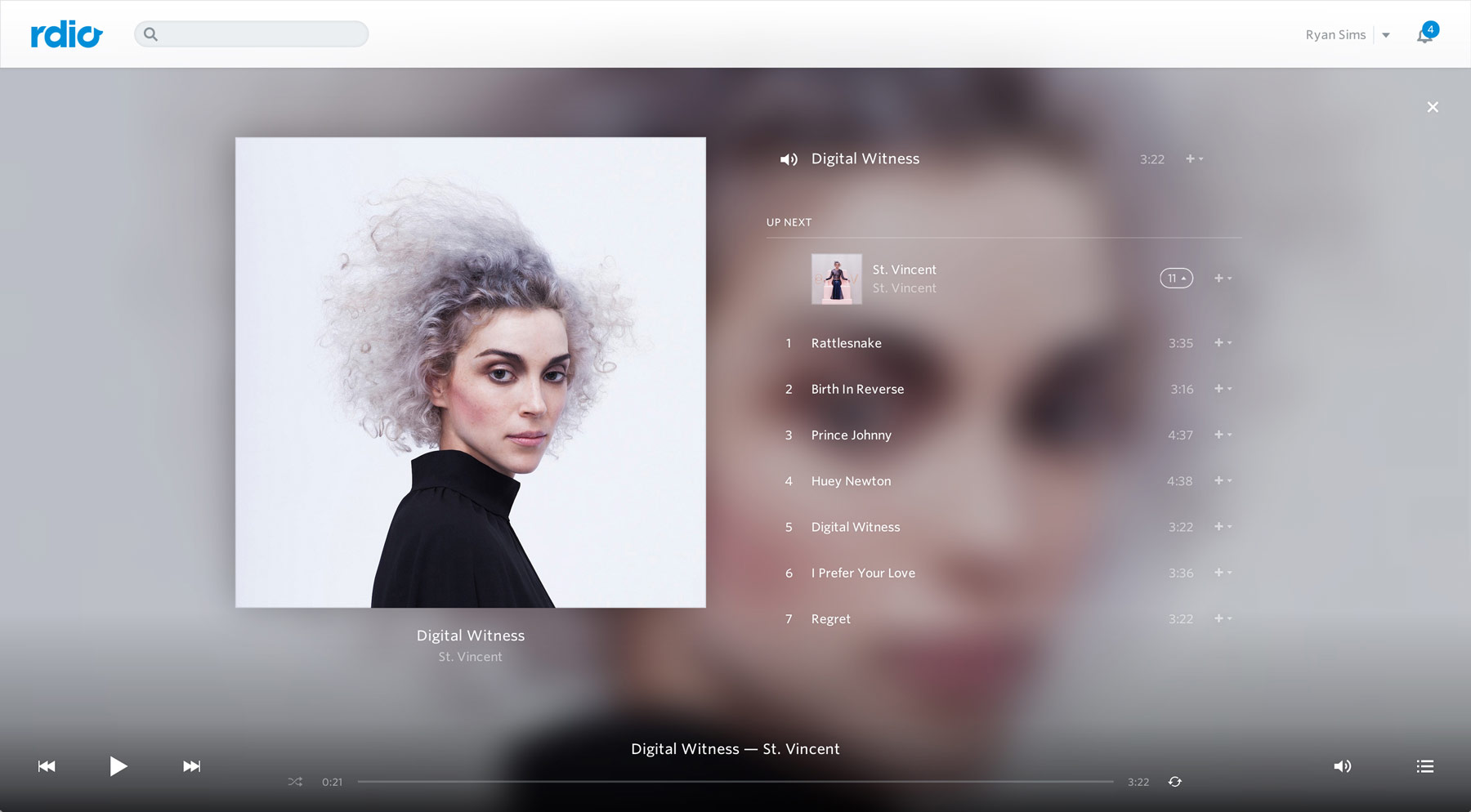
“It’s so rewarding to work on a product you use daily with people you truly care for. That satisfaction doesn’t mean we aren’t hungry to do better, innovate, and push the product forward. We are, but I try to savor every moment because what we have here is special.”
Are you creatively satisfied?
Completely—no hesitation. Rdio is a product I love deeply. And I’m positively gaga for my team: they’re incredible. It’s so rewarding to work on a product you use daily with people you truly care for. That satisfaction doesn’t mean we aren’t hungry to do better, innovate, and push the product forward. We are, but I try to savor every moment because what we have here is special.
I remember using Rdio for the first time and thinking, “My god, this is it: this replaces iTunes for me.” And I had been a religious iTunes user for years. If I didn’t work here, Rdio would be on my home screen and I would want this company to succeed. To be an integral part of that is something I never take for granted.
Tina: Ryan is a huge Rdio junkie, and he puts together such good playlists! We have a lot of love for Rdio, but I don’t get to listen to a lot of music because I’m editing or writing a lot of the time.
That’s the cruel irony of my role now. I’m in a lot of meetings, critiques, and presentations, so there aren’t many opportunities for me to listen to Rdio while I’m working on Rdio.
Is there anything you’re interested in doing or exploring in the next 5 to 10 years?
As far as personal projects go, no. I reached the realization that I’m not an idea guy, or the guy who goes home and works on side projects all night—that’s not who I am anymore. That was a healthy realization for me to finally come to. Of course, some of that is offset by how much fulfillment I get from Rdio.
A new passion of mine is building and managing teams, something that wouldn’t have interested me much until a couple years ago. I’ve hired six of the ten people on our team, and that’s been very fulfilling and rewarding. It’s something I think I’m good at, and I look forward to doing more of it as time goes on.
What advice would you give to a young person starting out?
One trend I’ve noticed that is a little alarming to me, specifically in product design, is the compulsion to make everything perfect, at any cost. I’m not a big fan of the term “pixel perfect.” I think it fosters an inaccurate view of reality. I believe that good product design is efficient, collaborative, and always evolving. It’s never done and it’s certainly never perfect. Do I think design should be thoughtful and intelligent? Absolutely. I just see an obsession with perfection that feels like it belongs more to the arts than product design. I’m all for beauty in products—
—but they should work, too.
Exactly.
The working part should be just as important as the aesthetic part, if not more. It needs to function effectively, otherwise I’m not going to use it.
Right. And to achieve that functionality, you’re going to have to make compromises. You won’t always get the perfect feature the way you’ve designed it in your pixel-perfect vacuum. Products are complex systems that are always changing—to think products will ever be perfect is unrealistic. So, my advice would be to push yourself to share your work early and often with other designers or coworkers, and that will push you to think about designs and design systems in healthy, sustainable ways.
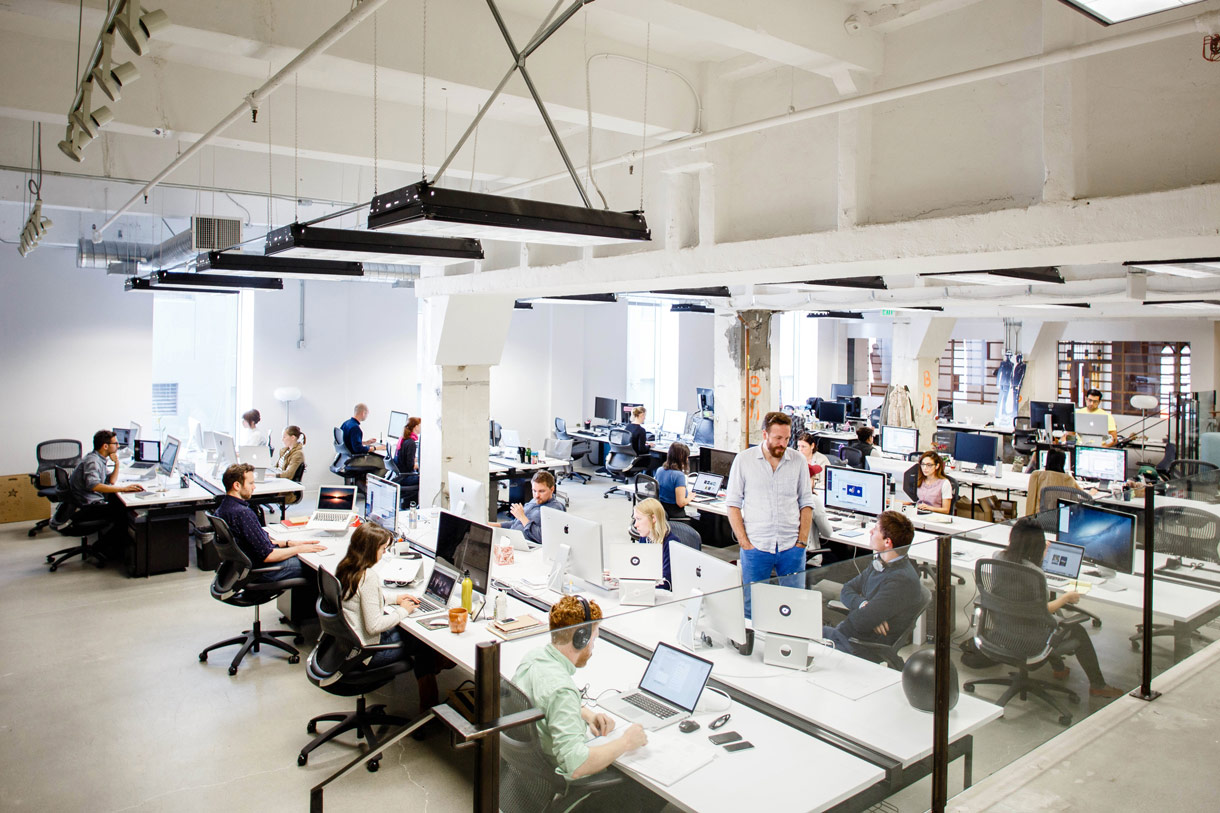
“…push yourself to share your work early and often with other designers or coworkers, and that will push you to think about designs and design systems in healthy, sustainable ways.”
So, you live in San Francisco?
Mm-hmm.
I haven’t been to San Francisco yet.
You haven’t?
I have a friend in San Francisco who always asks me to come visit, but I’m constantly telling her to come see me in New York, so it always ends up a stalemate. (laughing)
Anyway, how does living in San Francisco impact your creativity and your work?
I love San Francisco: it’s a beautiful place, and it definitely captured my heart when I moved here, but I felt the same way about Boston. I could see myself living somewhere else someday, but San Francisco is home for a long time.
To answer your question, it certainly impacts my work in a ton of ways. To have immediate access to such a wonderful community is inspiring, for sure. I’ve always felt a kinship to other designers and they’re everywhere here. I mean, Keegan Jones lives on my street—that’s mind-blowing! I’ve been fortunate to meet so many good people out here—it’s not just that they’re good designers, but also humble, hard-working, kind people. I love it.
And the food is absolutely fantastic. That’s what I miss most when I’m gone.
Is it important to you to be a part of a creative community of people?
It is. Like I mentioned before, the creative community at large played an important part in mentoring me throughout my career. You don’t see many communities that are so open to helping others succeed. Maybe that’s changing as time goes on and everything gets bigger and weirder, but I certainly don’t want to bitch and moan about the state of things.
That’s a different interview. (laughing)
I found something I love to do, and am surrounded by mostly like-minded and supportive people at every turn. That is inspiring. Hopefully that camaraderie is a permanent part of our DNA.
“I reached the realization that I’m not an idea guy, or the guy who goes home and works on side projects all night—that’s not who I am anymore. That was a healthy realization…”
What does a typical day look like for you?
Pretty boring. (laughing) I try to get to work much earlier these days. I cherish that quiet time to organize my thoughts before the whole thing winds up. During the day, I’m answering questions in chats and making sure designers have what they need to keep making, whether that means providing them with feedback or sitting with them at their desks to go over ideas.
We try to shield our designers from having a whole day full of meetings so that they can have nice long periods of designing without interruption. When I was an individual contributor, I loved the way Wilson navigated that position: he gave us everything we needed to succeed without any of the noise and chaos. Now, that’s my job. At first, it took some getting used to, but I enjoy it now.
Most days, I leave the office by 6pm, go home, eat a delicious dinner somewhere, and then relax and recover. Then I do it all over again the next day.
I’m an introvert: it takes a toll having to be “on” all day long. By the time I get home, I’m pretty spent. The weather here is amazing, though, so I try to stay active by participating in intramural sports. We have a soccer team that plays on Tuesday nights, a basketball team that plays on Monday nights, and I play tennis on the weekends.
I like to go biking, which lets my mind go elsewhere for a while. I don’t think about work, the computer, social media, or anything. I’m just focused on where I’m headed. It’s a nice kind of mental exercise or meditation.
Yeah, I need that time to recharge. Sports have always been a way for me to mentally recharge and put all that shit away for a few hours. When you’re young, you have the stamina to work on something 24/7, but I just can’t anymore. I value that time as a way to reset my brain and get full batteries again.
Are there any albums or musicians that you’re listening to right now?
You should look at my Heavy Rotation on Rdio. If I had to guess what was number one there, it would be St. Vincent—I’m absolutely in love with Annie Clark. She’s so beautiful and interesting.
Lately, though, I’ve been digging back into the music of my adolescence, like Promise Ring, Sunny Day Real Estate, Jimmy Eat World, and others. Rdio makes it so easy to find boatloads of new music, but I’m trying to go back and invest in some of those older albums again.
Do you have any favorite movies or TV shows?
The latest Game of Thrones episode was incredible—I am totally sucked into that show.
Have you read the books?
I haven’t.
I watched the first season and wanted more battles. I found it to be sorta boring. I’m just not that invested at this point. (laughing)
It’s a tough investment. To be honest, it’s a very boring show: there is a lot of exposition.
But people love it.
I don’t understand what the mass appeal is. It has a hundred characters with weird names that are hard to remember and there’s very little action. It’s crazy!
I’m a sucker for a good, slow burn, though, so a show like that is right up my alley. Then, as a palate cleanser, I enjoy shows like Archer, which is one of my favorites. Sunday nights are one big HBO lineup for me: Game of Thrones, Silicon Valley, Veep, and Last Week Tonight with John Oliver.
We just watched Last Week Tonight and it is hilarious. We’ve also watched Silicon Valley, which is actually kinda funny.
Silicon Valley is funny as hell. I thought they caught their stride around the third episode.
As for movies, The Prestige is my all-time favorite. I’ve watched it dozens of times, and I never grow tired of it. Christopher Nolan is a master storyteller. That and Three Amigos, which is a weird combo, I know, but that pretty much defines my taste in a nutshell.
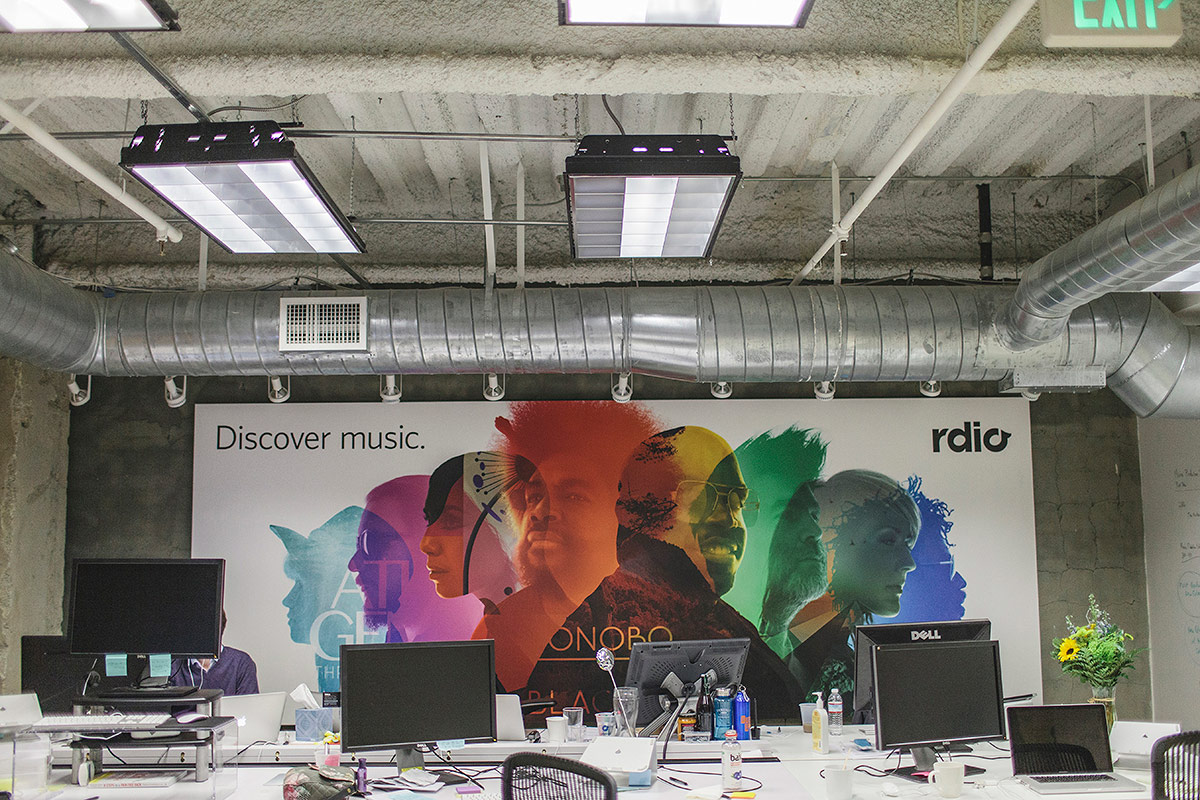
“I believe that good product design is efficient, collaborative, and always evolving. It’s never done and it’s certainly never perfect.”
Do you have any favorite books?
If I had to pick a favorite, it would be A Prayer for Owen Meany by John Irving.
I haven’t read that.
You should. It’s full of slow, boring exposition. (laughing)
I’m attracted to movies and books that are rooted in reality, but with a little twist of the supernatural. The Prestige fits into that genre. Game of Thrones is a bit more heavy-handed with the fantastical, but A Prayer for Owen Meany is sublime in a real, but spiritual way. It’s set in New England in the 1950s and it’s about a kid—Owen—with dwarfism who believes he is special and that he is an instrument of God. I won’t give too much away, but it’s wonderful. You should read it.
Do you have a favorite food?
There’s nothing better than a good hamburger.
A hamburger or a cheeseburger?
A hamburger, a cheeseburger, a bacon cheeseburger. I love all three.
Meat and cheese and bacon. (laughing)
Nothing beats corn on the cob, a hamburger, and some french fries. All the sushi and delicious gourmet food we have in San Francisco will never take that out of me.
Do you have a go-to hamburger spot in San Francisco?
My favorite place was Kronner Burger, but they recently moved to Oakland. It was close to our office, so a handful of us would have burger night every Friday. Their burgers are insanely good. The only other burger that can compare to Kronner Burger is from a joint in New York City’s East Village called Black Market.
We love Black Market. It’s Ryan’s favorite burger.
It’s so simple and delicious.
What kind of legacy do you hope to leave?
There’s a propensity for designers to overemphasize or glamorize what we do, so I’ll tread carefully here. I hope that what people remember about me is that I always worked hard to make things simpler and more enjoyable, whether that was on a product, team, or personal level. I’d be absolutely thrilled if anyone who’s worked for or with me thinks, “I’m a better designer because we worked together.”
Maybe I should have grander aspirations? Our industry changes so much and so fast that it’s hard to remove myself from the day-to-day and think about what all this will mean in 30 or 40 years from now.
It is difficult to think about. It’s been interesting to talk to people who are at different stages of their lives and careers, because everyone answers differently. And the way we think about it can change, too.
In 5 to 10 years from now, I would hope I’d want my legacy to be different somehow—maybe rooted in the same ideals, but with more clarity. Or maybe it will be fuzzier. I don’t know. Maybe my goal should be to come up with a better answer for that question? (laughing)
Maybe it’s best to let it work itself out.
Yeah. Maybe enough moments haven’t quite snapped together yet. When they do, I’ll have a clearer picture. For now, I’m in a place that I love, working side-by-side with people I care about: if that’s my legacy, then that’s a hell of a way to live. I couldn’t ask for much more.
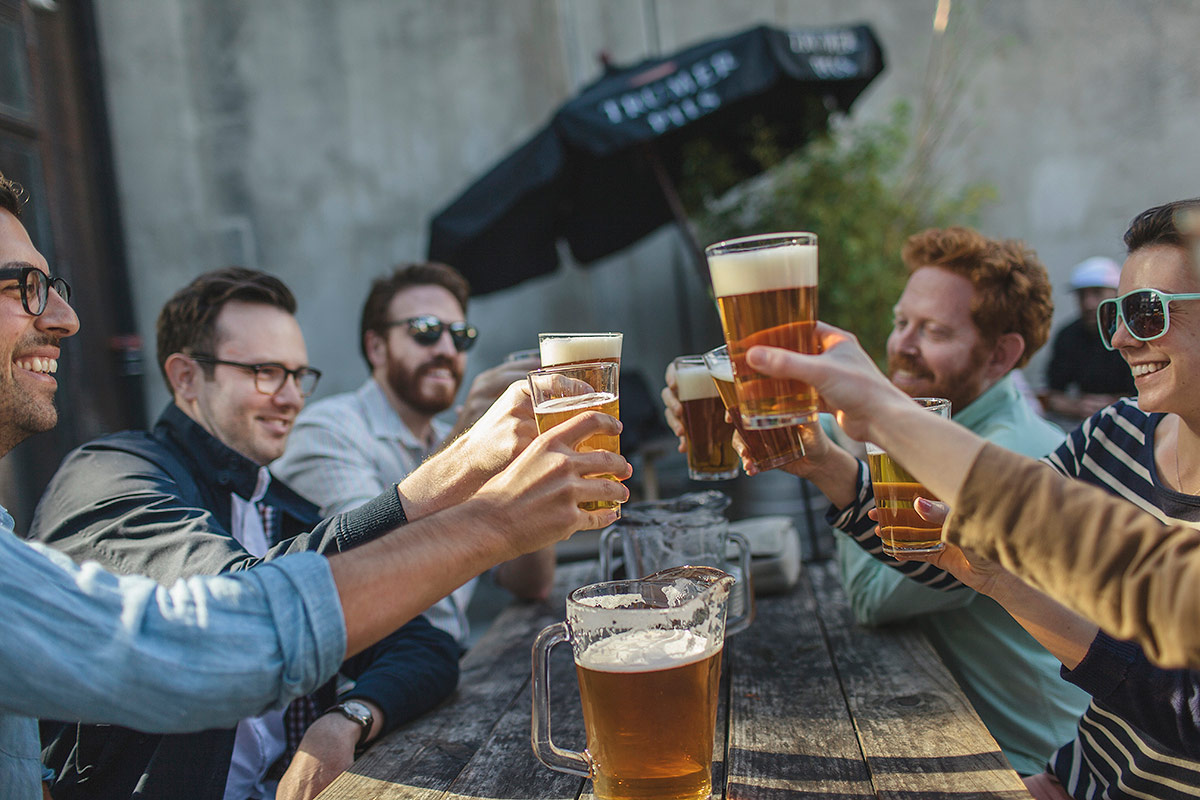
“…I’m in a place that I love, working side-by-side with people I care about: if that’s my legacy, then that’s a hell of a way to live. I couldn’t ask for much more.”